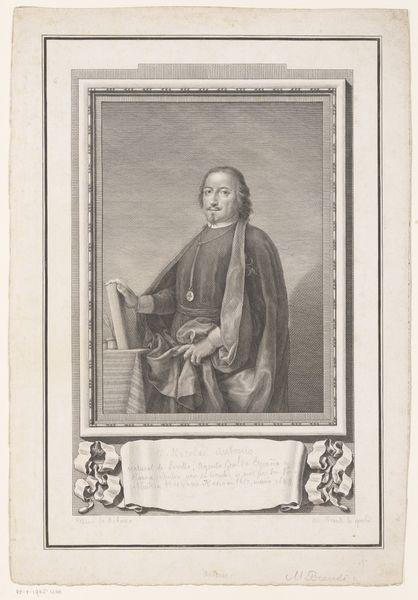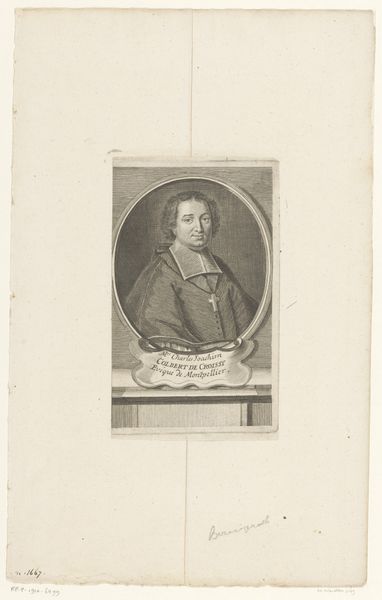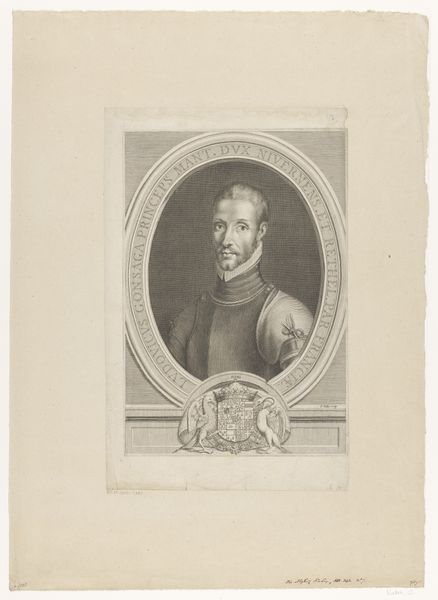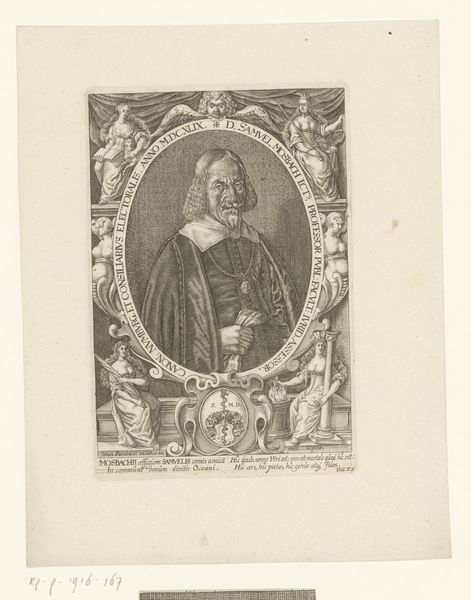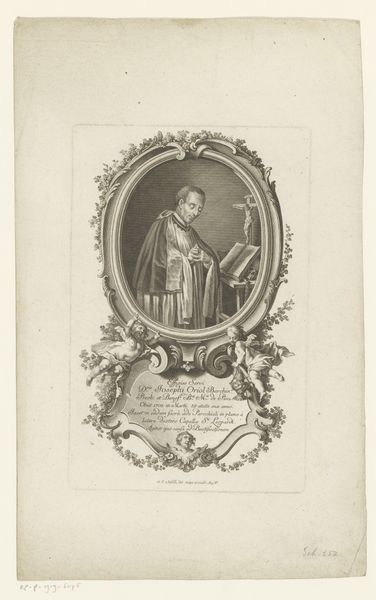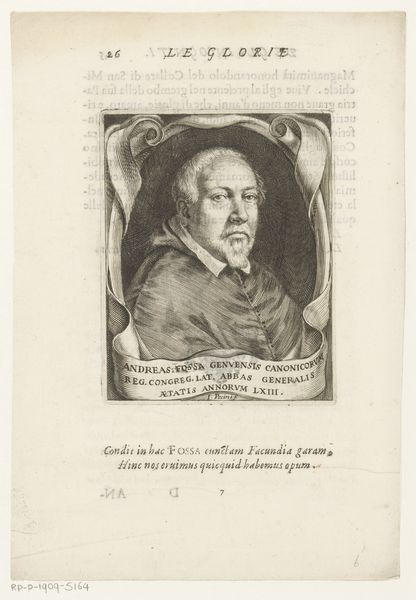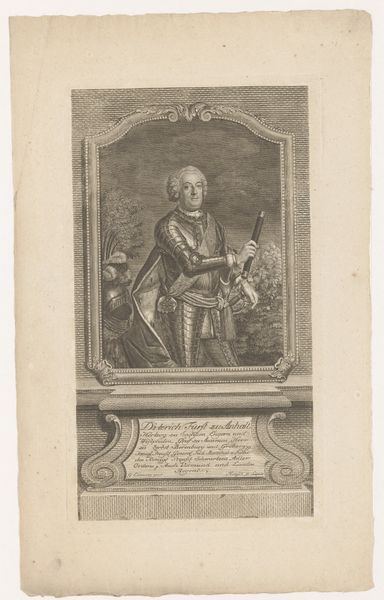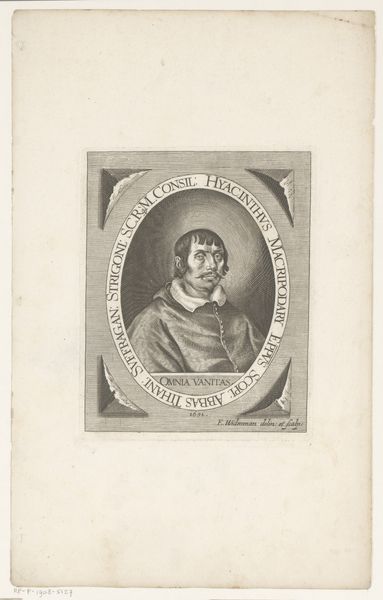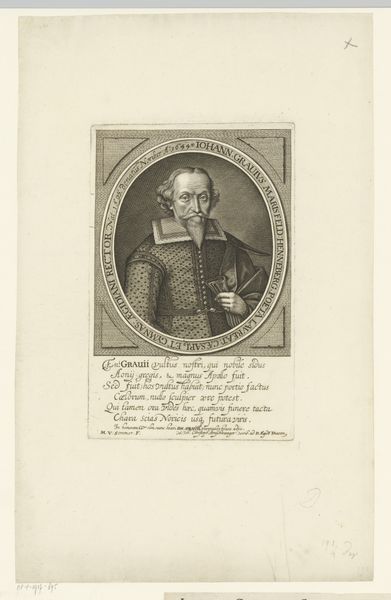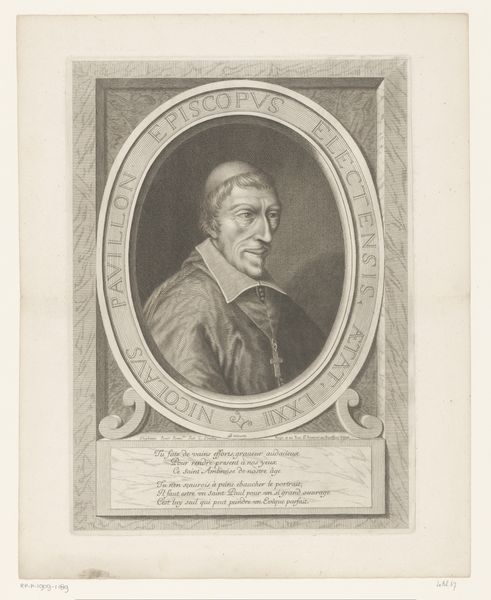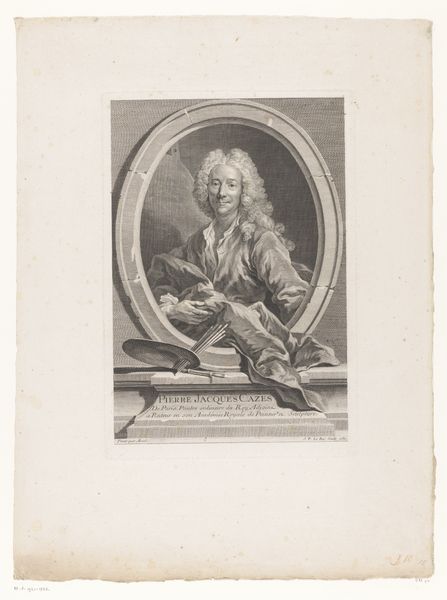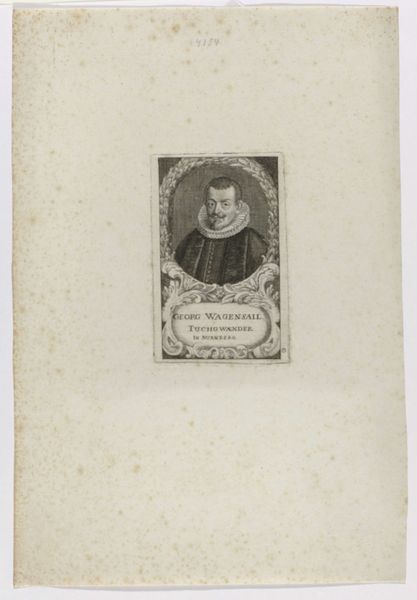
Dimensions: height 269 mm, width 202 mm
Copyright: Rijks Museum: Open Domain
Curator: Here at the Rijksmuseum, we're fortunate to have this engaging piece from between 1750 and 1819: a portrait of Bishop Michele Carlo Cortigiani, created by Antonio Pazzi. It's an engraving that gives us a glimpse into the life of this figure. Editor: My first thought? He seems a little unsure of himself, doesn't he? That cross looks almost like he’s trying to balance it. Curator: Interesting. Well, from an art historical perspective, we can examine how the piece situates Cortigiani within the Catholic Church and its intersection with society at the time. Consider the ornate frame, a typical baroque embellishment reflecting status and authority. Editor: That frame is WILD, isn't it? Almost comical with its excessive swirls. But you know, that tentativeness I mentioned, maybe that’s relatable? Like, even with all the pomp and circumstance, he’s still just a person. It really takes the edge off. Curator: Absolutely. We can also examine the symbolism: the cross as a symbol of faith but also the weight of responsibility on Cortigiani’s shoulders. And the engraving process itself allows for a wider dissemination of his image, playing into power dynamics and public perception. Editor: It’s weirdly… endearing? Is that the right word for a Bishop? He's got a quiet dignity. It doesn't scream "powerful religious figure". Curator: And in that observation, we confront how even within the framework of established institutions, there were individuals, as you say, navigating their roles with human complexity. It brings into focus how identity is both shaped and expressed within certain socio-political landscapes. Editor: It’s like a Renaissance Instagram filter. Just the basics. Slightly askew halo... *click* ...done! Curator: So, next time, what will strike you, dear listener, the complex intersection of religion, art, and power during the late Baroque era, or perhaps, a little empathy for the man beneath the collar? Editor: Right? And perhaps also the enduring power of portraiture. We all want to be seen.
Comments
No comments
Be the first to comment and join the conversation on the ultimate creative platform.
